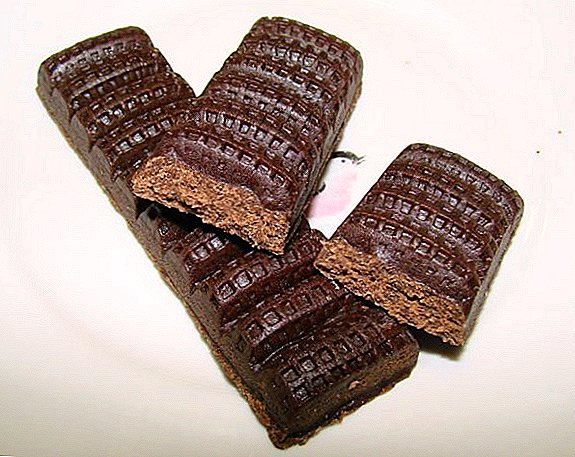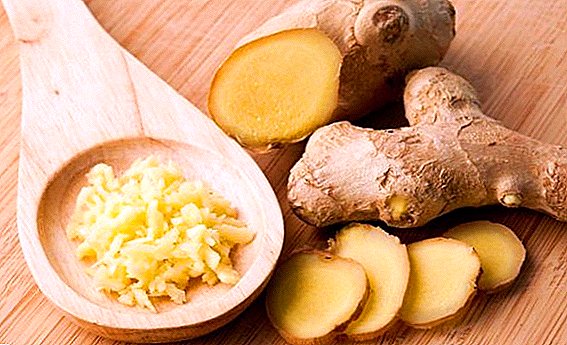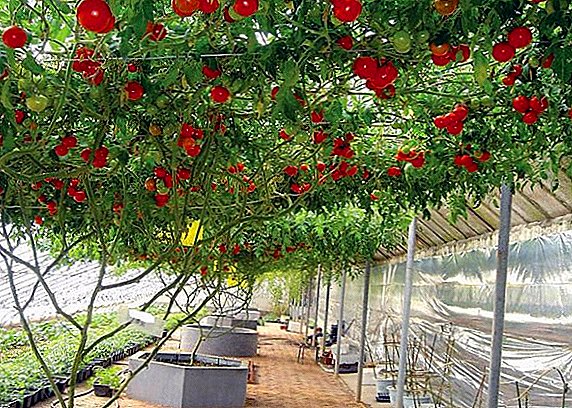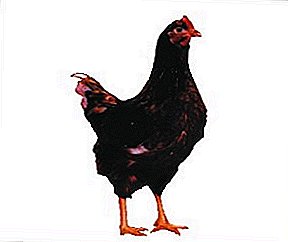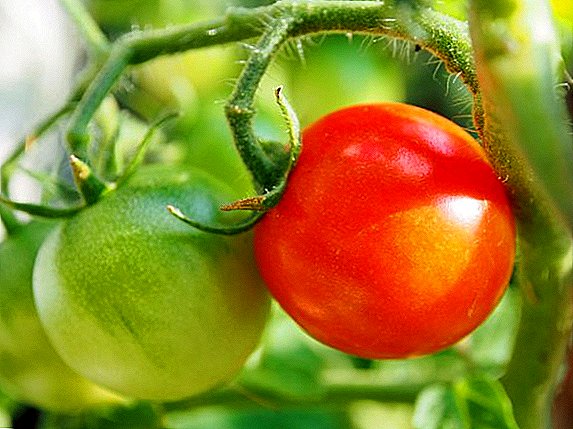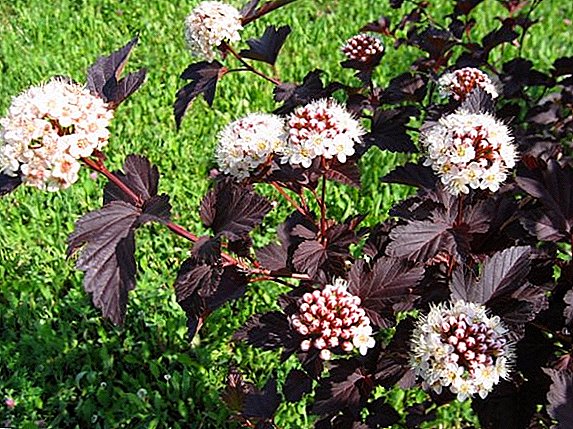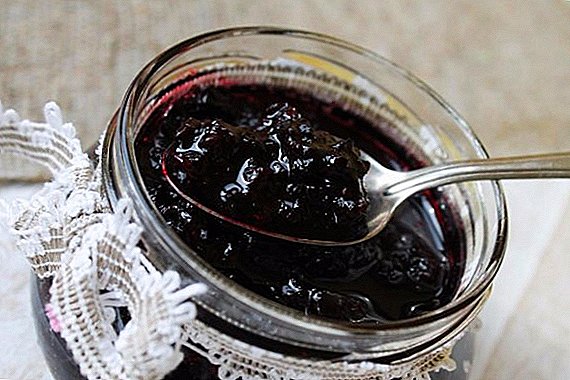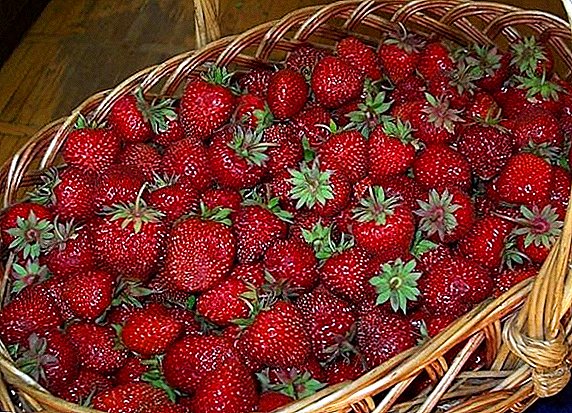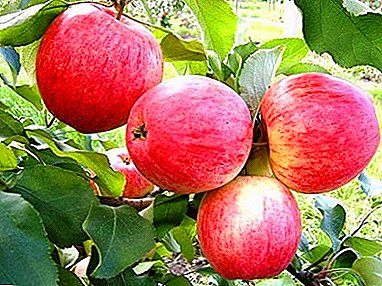 There are thousands of varieties of pears, the beloved of all fruits. Many varieties are artificially bred hybrids. One of them is the rainbow pear.
There are thousands of varieties of pears, the beloved of all fruits. Many varieties are artificially bred hybrids. One of them is the rainbow pear.
He was taken to the Urals, where he has long been among the most popular.
Let's learn more about it.
Breeding history
It all started with the fact that at the beginning of the nineteenth century an autumn pear was found in the Belgian forest, dubbed the “Forest Beauty” and later became very popular in Europe. Then, in the middle of the twentieth century, the Soviet breeder P. A. Zhavoronkov obtained a seedling 41-15-9 by hybridizing the Ussuri pear.  And in the 1980s, "Forest Beauty" and 41-15-9 met at the base of the South Ural Scientific Research Institute for Horticulture and Potato. They were crossed by a group of breeders headed by the famous scientist E. A. Falkenberg. As a result, in 1985, the summer variety "Rainbow" appeared.
And in the 1980s, "Forest Beauty" and 41-15-9 met at the base of the South Ural Scientific Research Institute for Horticulture and Potato. They were crossed by a group of breeders headed by the famous scientist E. A. Falkenberg. As a result, in 1985, the summer variety "Rainbow" appeared.
Did you know? According to the Russian Book of Records, the biggest pear grew in 2013 in Russia, in Ingushetia. Its weight is 1 kg 7 g.
Tree description
Trees varieties "Rainbow" grow medium-high. Their crown is spreading, tucked in a round or wide pyramidal shape. Immediately after planting it grows rather quickly, and after the start of fruiting, growth slows down.
This variety can easily be grafted and grown on seedlings of pear "Ussuriyskoy". During the period of fruit ripening, the branches weighted with the harvest can break off, so they need props.
Fruit Description
Fruits grow large, their weight reaches 130-140 g.  The shape is round, slightly cuboid. The color of the fruit is green; when they ripen, they turn yellow-green with a red blush on the sunny side. The skin is thin, tender.
The shape is round, slightly cuboid. The color of the fruit is green; when they ripen, they turn yellow-green with a red blush on the sunny side. The skin is thin, tender.
Ripe pulp has a dessert taste: juicy and sweet. Pears have a beautiful presentation.
Lighting Requirements
"Rainbow" loves sunlight, so it needs to be planted in a well-lit area, but protected from the wind. In dense plantings where there is not enough light, mature trees stretch upwards. But young trees need pritenyat to avoid burns.
Check out such varieties of pears as "Thumbelina", "Century", "Bryansk Beauty", "Dessert Rossoshanskaya", "Hera", "Children", "Rogneda", "Kokinskaya", "Tenderness", "Petrovskaya".
Soil requirements
It is very important to choose the right place for landing:
- The soil best suited for this pear is leached chernozem of medium density.
- The soil on the plant should contain sand and some clay.
- When planting seedlings land should be loose. And further after watering it should be loosened. So the root system will be provided with sufficient air circulation.
- The soil must be properly fertilized: humus or compost with phosphate-potassium fertilizer.
- Land under the crown is desirable to mulch humus, peat, compost or black film.

Pollination
Self-fertility, or self-pollination ability, is very weak. "Rainbow" needs the help of bees and the neighborhood of the pollinator - pears of another variety, which bloom at the same time. For this the best are the varieties: "Krasulia", "Northerner" and "Fairytale".
"Rainbow", in turn, is also a suitable pollinator for many popular pear varieties.
Fruiting
"Rainbow" refers to skoroplodnyh varieties. Fruiting begins at 4 years after planting. Fruits every year, increasing the volume of the crop.
Flowering period
The pear usually blooms in April or May. It depends on the region and on the weather. The souther the area and the warmer the spring, the earlier the tree blooms. It usually begins to bloom 7 days earlier than an apple tree. The flowering period lasts about 2 weeks. 
Gestation period
Like other summer varieties, the harvest begins in August. Harvest time also depends on the weather, soil and quality of tree care. Fruits usually ripen amicably, almost simultaneously.
A ripe pear turns yellow skin, but the seeds remain white. Fruits do not peel off the tree until fully matured.
Important! Experienced gardeners recommend harvesting the fruits immature. Within a few days, they will “reach” in a cool room, for example, in a cellar, where they will be soft and juicy.
Yield
"Rainbow" - high-yielding variety. In the first years of fruiting, yields are growing rapidly: in the 6th year after planting, 16 kg of fruits can be removed from 1 tree. The amount of harvest increases every year.  On average, one tree can give 30-35 kg of pears. The volume of the crop is strongly influenced by environmental conditions and the quality of agricultural technology.
On average, one tree can give 30-35 kg of pears. The volume of the crop is strongly influenced by environmental conditions and the quality of agricultural technology.
Important! To increase the yield, it is important to regularly and correctly prune trees. In the first three years, formative pruning is carried out, and in the following years - sanitary.
Transportability and storage
The shelf life of the fruit is small. They can lie without losing the presentation and taste, only 10 days. Then they darken and soften. In the refrigerator, this period is extended to two weeks, after which the fruits deteriorate.
Pears have a beautiful presentation. But thin peel complicates transportation. Remove and transport the fruit must be very careful not to damage.
Resistance to environmental conditions and diseases
"Rainbow" is resistant to pear gall mites and scab.  Also, it is not affected by a bacterial burn. But there are other diseases and pests for which this variety does not have immunity.
Also, it is not affected by a bacterial burn. But there are other diseases and pests for which this variety does not have immunity.
Therefore, periodically you need to inspect the trees and take measures to prevent major diseases.
Among the common diseases and pests of pears are also moth, rust.
Drought tolerance
The rainbow pear has an average level of drought tolerance. During periods of drought trees do not suffer. But this affects the yield: the number of increments decreases, the fruits become small, because of which the yield is reduced.
Did you know? Pear yield exceeds other fruit crops. One pear tree produces 2-3 times more fruits than an apple tree.
Winter hardiness
The level of winter hardiness of this variety is very high. The tree tolerates the harsh winter and frost around -37 ° C. Frosting is possible when the temperature drops below -40 ° C. 
Fruit use
Pears have a pleasant dessert taste, so it is best to use them fresh. But they are great for processing and juice for preservation. Experts recommend using fruits before they fully mature: then the flesh becomes very loose.
Pears get the best taste during the period when the skin takes on a yellowish tint.
Advantages and disadvantages
Pear "Rainbow", as can be seen from the description of the variety, has its advantages and disadvantages.
pros
- good taste and presentation of the fruit;
- precociousness;
- yield;
- high winter hardiness;
- resistance to a number of diseases and pests.

Minuses
- short shelf life of fruits;
- low drought tolerance;
- the need for a tree pollinator.
So, we have seen that the prevalence of positive qualities makes the Rainbow pear attractive to gardeners. This variety is suitable for both personal use and for growing for sale. Follow the simple rules and enjoy its excellent taste.


